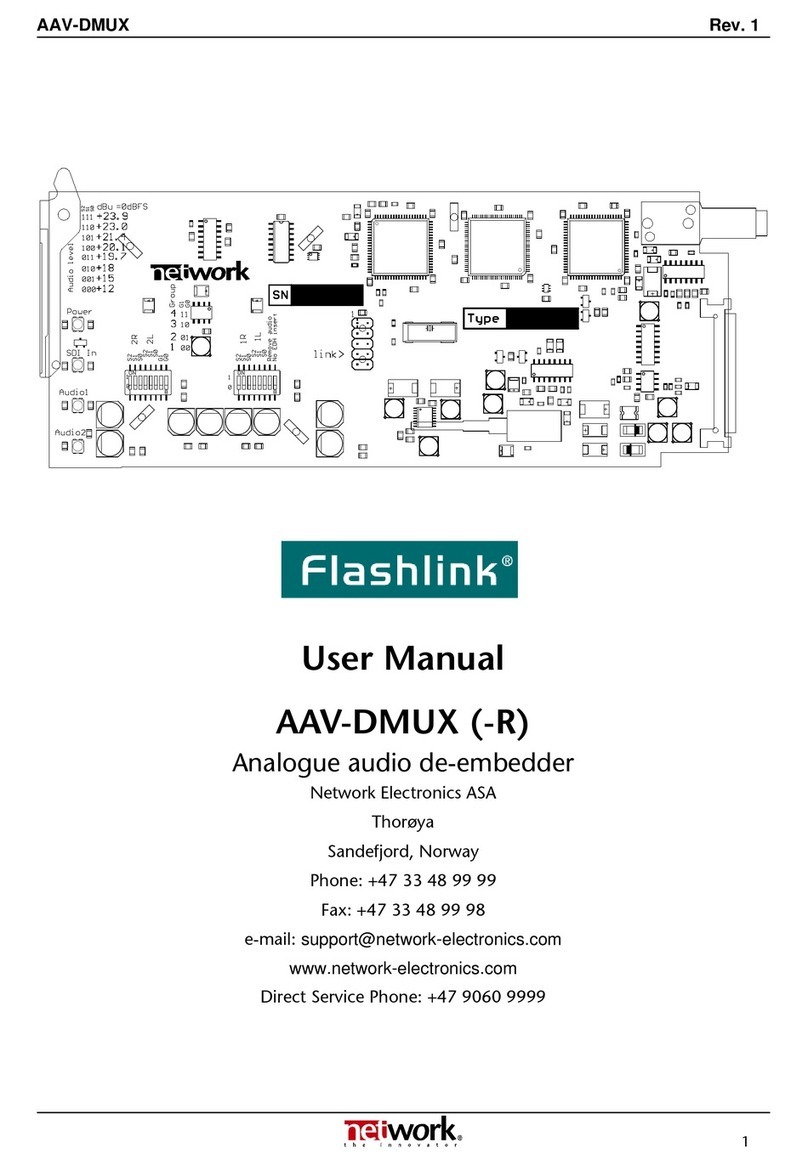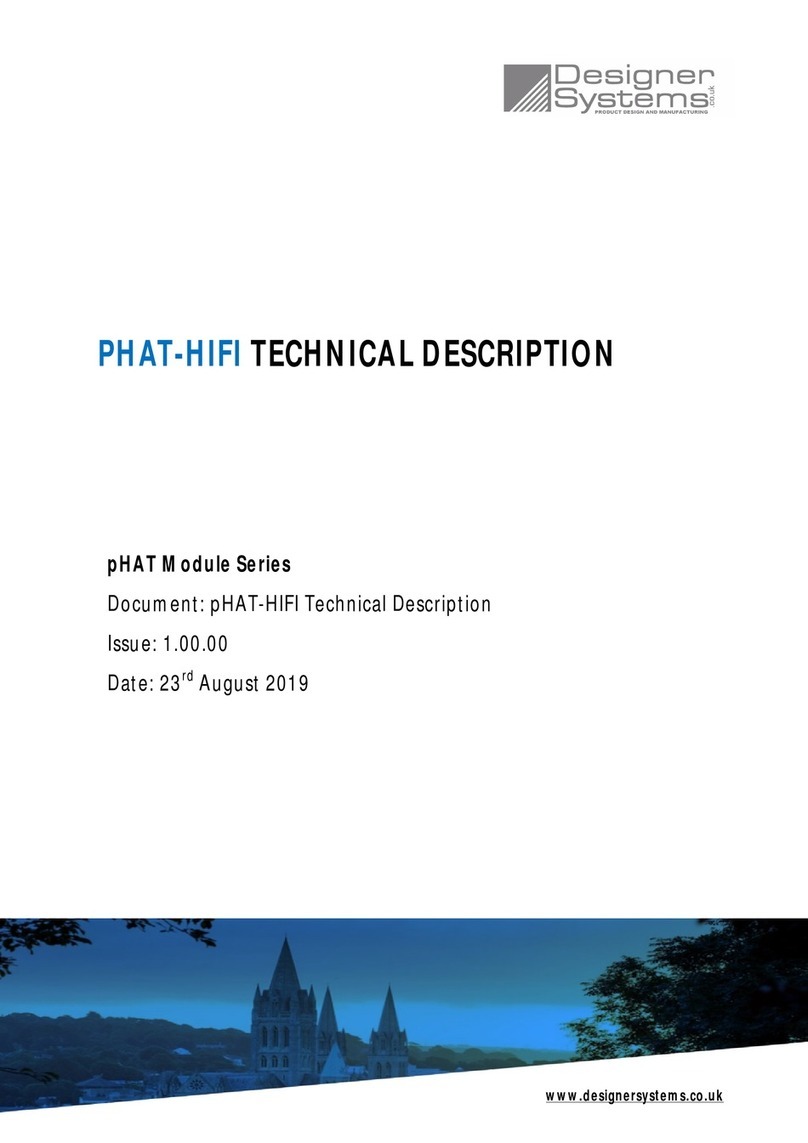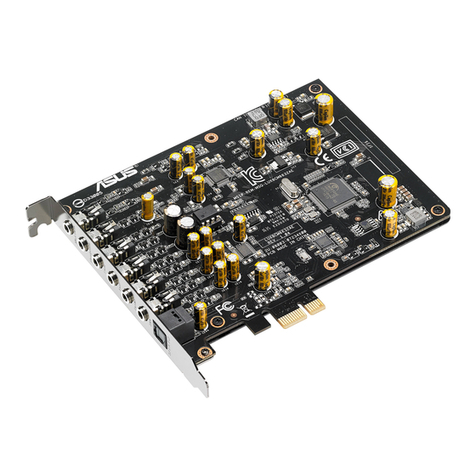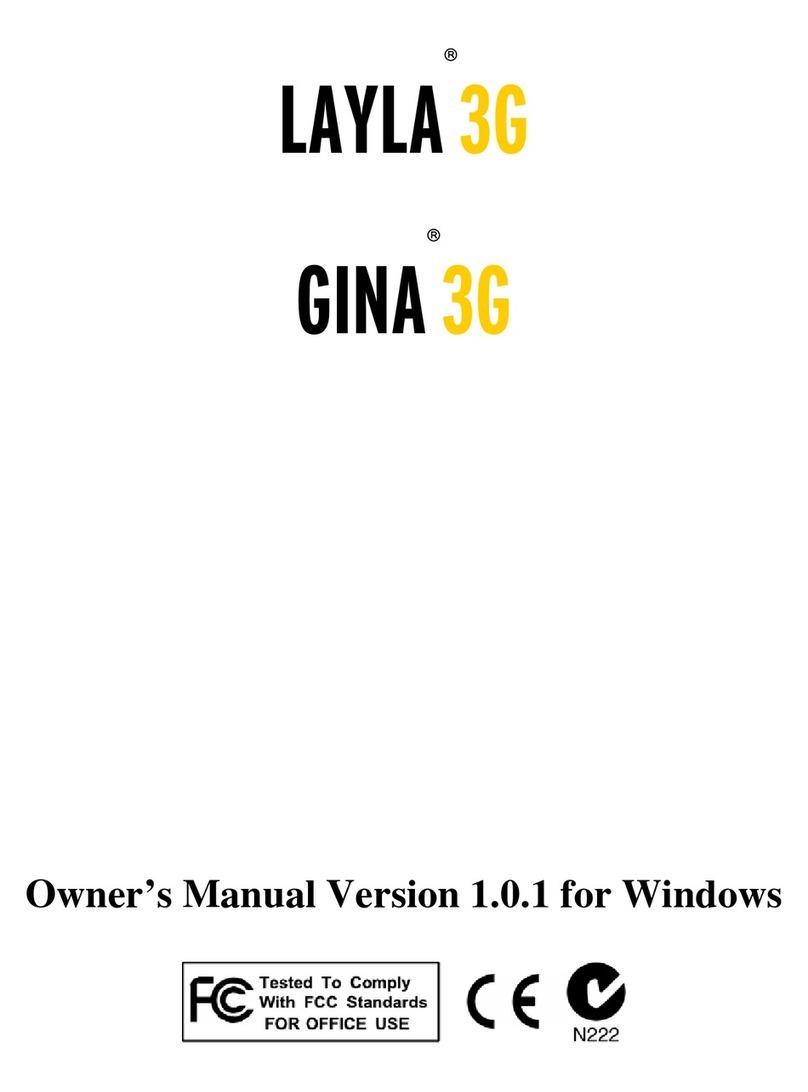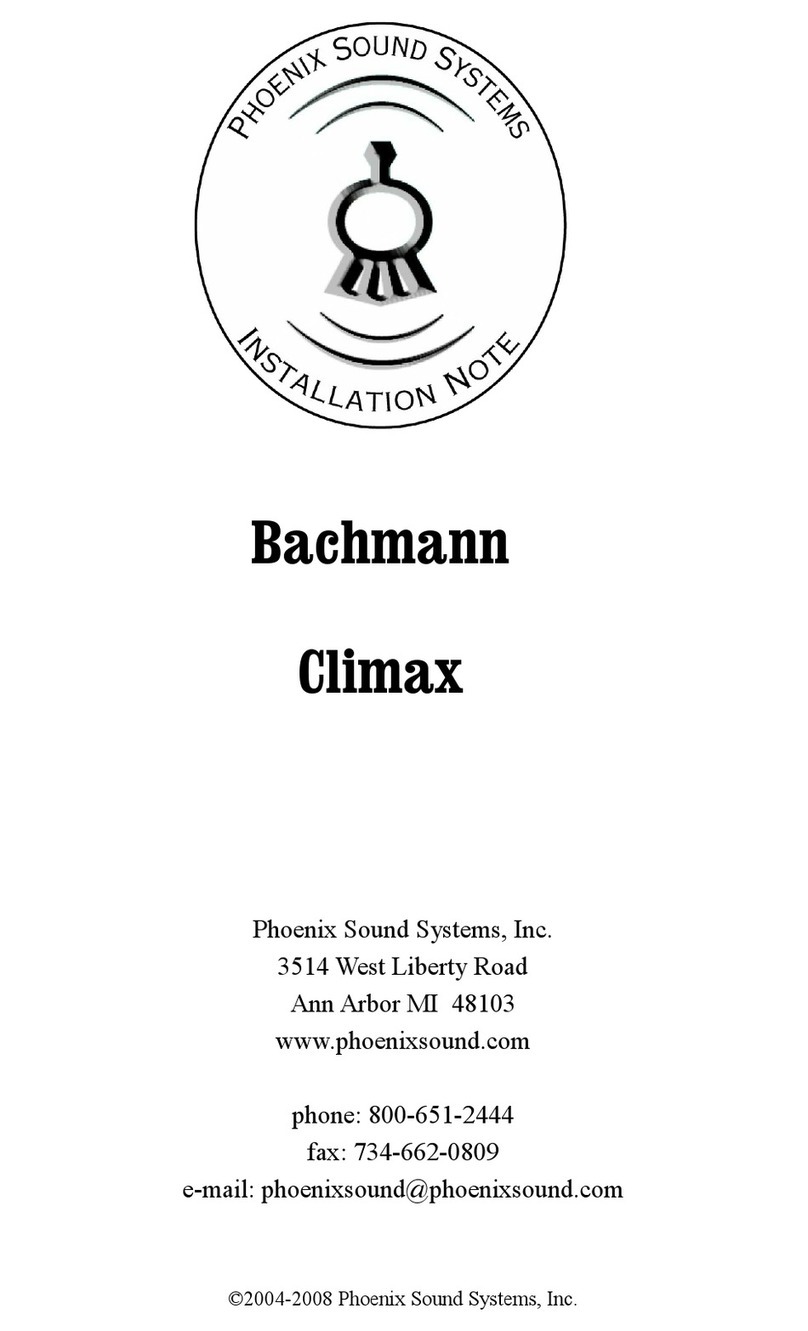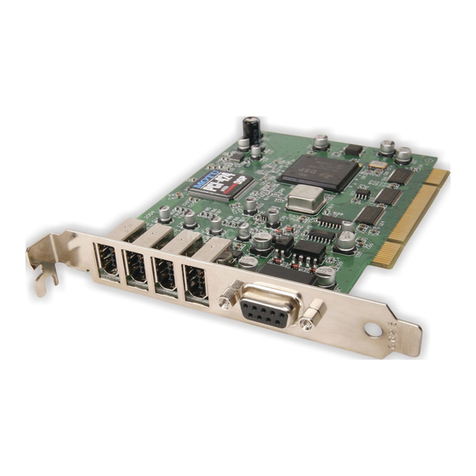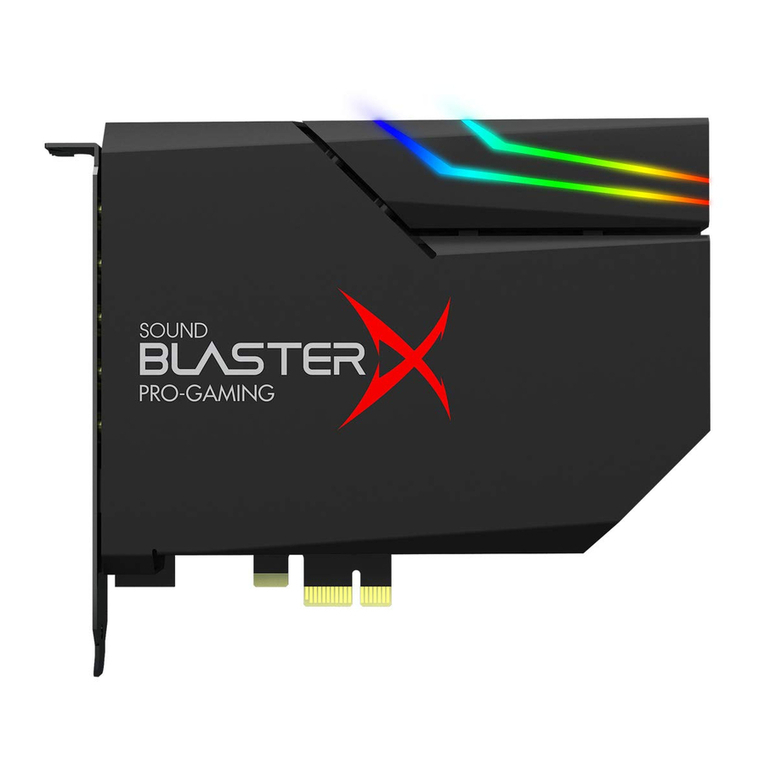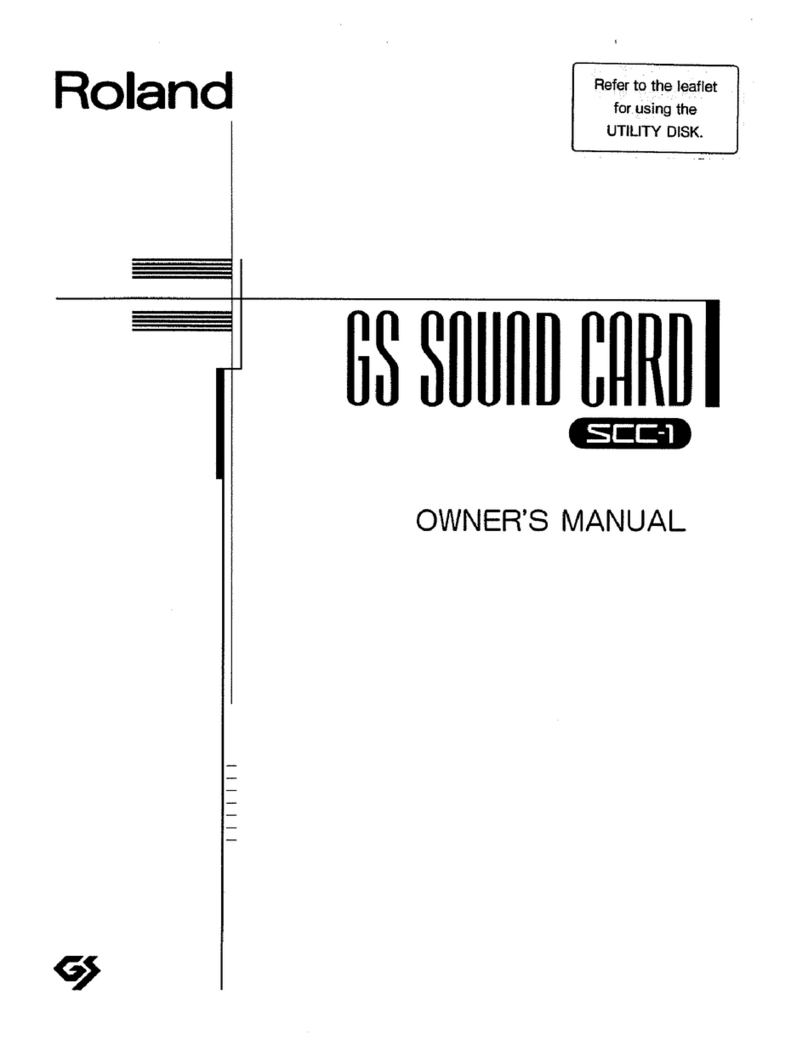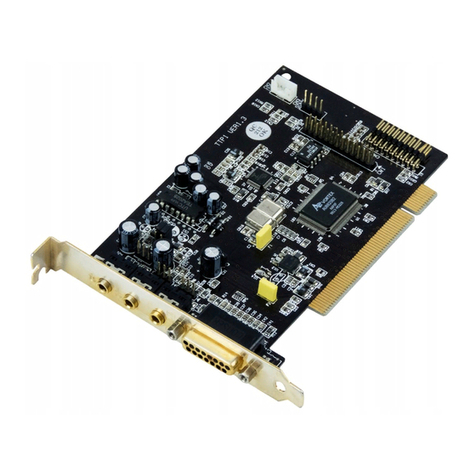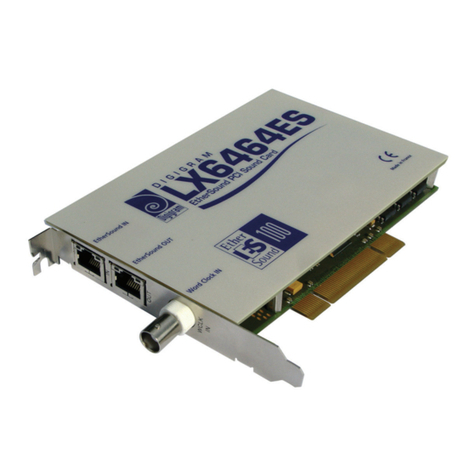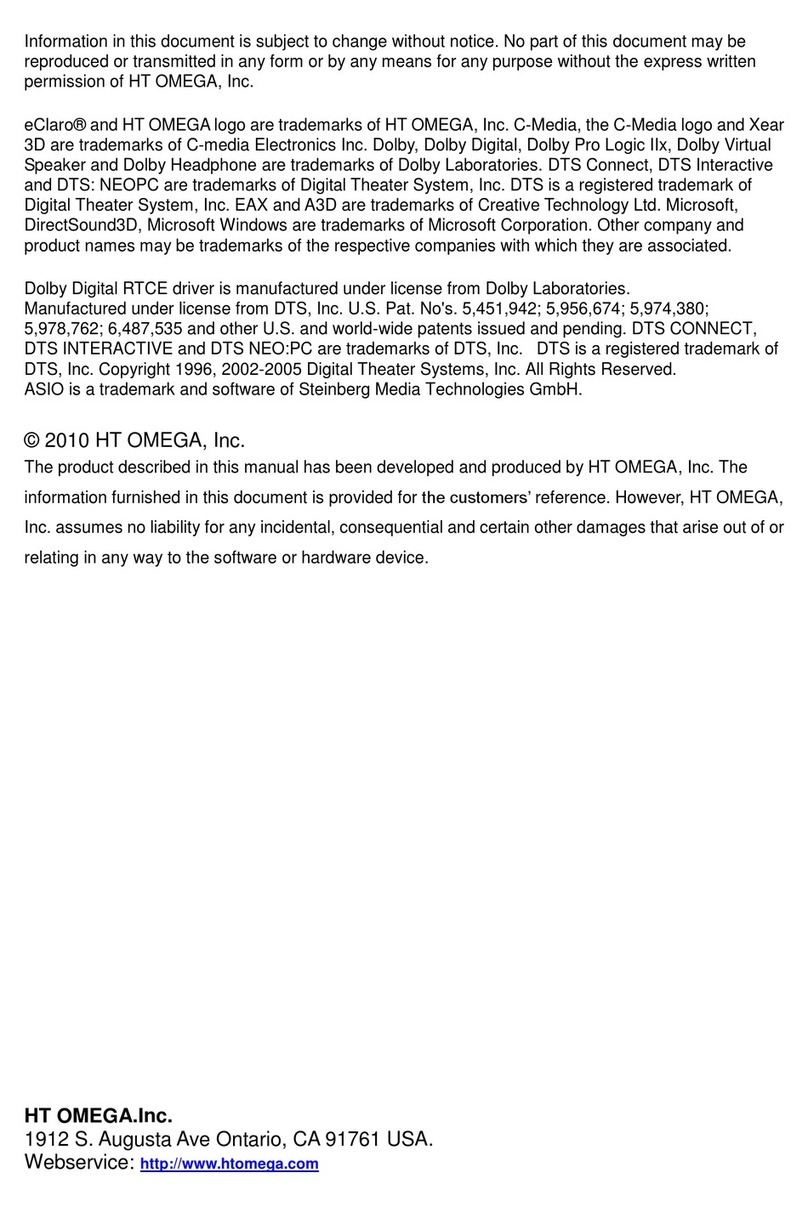Network Electronics AAV-MUX User manual

AAV-MUX
Analogue audio embedder
Product Manual
Rev. 1
Network Electronics ASA
Thorøya
Sandefjord, Norway
Phone: +47 33 48 99 99
Fax: +47 33 48 99 98

AAV-MUX Rev. 1
Network Electronics ASA
Thorøya
Sandefjord, Norway
Phone: +47 3348 9999
Fax: +47 3348 9998
e-mail: [email protected]
www.network-electronics.com
Direct Service Phone: +47 9060 9999
The latest version is always available in pdf-format on our web-site:
http://www.network-electronics.com
Current revision of this document is the uppermost in the table below.
Revision Replaces Date Change Description
1 0 06/02/06 Updated CWDM laser options.
0 D 01/06/05 GPI specifications, GPI pinning, layout.
D C Revised specifications, audio LED is green not orange.
CB DIP drawing for r0410 board. Tidying and LED
description changes.
BA EDH functions, DIP drawing and description. Gyda
figures.
A Preliminary version. Pre production run.
2

AAV-MUX Rev. 1
Index
1 INTRODUCTION...........................................................................................4
2 SPECIFICATION.............................................................................................5
2.1 Measurement conditions........................................................................5
2.2 General....................................................................................................5
2.3 Inputs.......................................................................................................5
2.3.1 Video Input:..........................................................................................5
2.3.2 Audio Inputs:........................................................................................5
2.4 Outputs....................................................................................................6
2.4.1 SDI Output ..........................................................................................6
2.4.2 Optical Output.....................................................................................6
2.4.3 GPI.......................................................................................................7
3 DETAILED DESCRIPTION..............................................................................7
4 CONFIGURATION.........................................................................................7
4.1 DIP switches............................................................................................8
4.1.1 Input gain.............................................................................................8
4.1.2 Group selection....................................................................................8
4.1.3 20/24...................................................................................................8
4.1.4 no EDH.................................................................................................8
4.1.5 Monitoring the status with Gyda..........................................................9
5 LIMITATIONS................................................................................................9
6 CONNECTOR MODULES............................................................................10
6.1 AV-MUX-C1...........................................................................................10
6.2 GPI Control Connections......................................................................11
7 MODULE STATUS.......................................................................................11
7.1 LED Overview........................................................................................12
8 LASER SAFETY PRECAUTIONS....................................................................13
9 DECLARATION OF CONFORMITY WITH CE..............................................14
10 ENVIRONMENTAL REQUIREMENTS FOR NETWORK FLASHLINK®
EQUIPMENT....................................................................................................14
3

AAV-MUX Rev. 1
1 Introduction
The AAV-MUX card is a four audio channel, analogue audio embedder card for
serial digital video. It is one of the Flashlink® series of modules, providing a
compact and cost effective solution for the transport of digital video and audio
over single and multi mode optical fibre.
The card has a serial digital video input and a serial digital video output. There
is an optional optical output with a choice of lasers. The CWDM and the
1550nm lasers and have output powers of 0 dBm while the 1310nm laser has
an output power of -7.5dBm. This corresponds to the Flashlink® range of SDI-
EO, electrical to optical converter cards.
Figure 1 AAV-MUX Block diagram
4
Serialiser
EDH
processor Embedder
SDI
Audio1L
Audio1R
Audio2L
Audio2R
Laser
SDI

AAV-MUX Rev. 1
2 Specification
2.1 Measurement conditions
Sampling rate 48 kHz
Ambient temperature 25ºC
Measurement bandwidth 20 Hz-20 kHz
Detector RMS
Input overload level (0dBFS) +18 dBu
2.2 General
Power: +5V DC 0.51A 2.6W, +15V DC 0.063A
0.95W
Control: DIP switches, Gyda system controller.
Monitoring: Front panel LEDs and Gyda system
controller.
EDH processing: Full. Received flags are updated, new CRCs
are calculated.
Embedding level SMPTE S272M C Synchronous audio at 48 kHz and
extended data packets (24 bit optional).
Embedded audio word length: Configurable 20 or 24 bits.
Audio delay 0.79 ms
Video delay 2.3 µs
2.3 Inputs
2.3.1 Video Input:
Video Data rate: 270Mbps
Video frame rate: 50 Hz or 60 Hz.
Equalisation: Automatic up to 35dB
Impedance: 75Ω
Return loss: >15dB @270MHz
Signal level: nominal. 800mV
Connector: BNC
2.3.2 Audio Inputs:
Number of analogue inputs: 4
Audio sampling frequency: 48 kHz
Differential Impedance: 25kΩelectronically balanced.
5

AAV-MUX Rev. 1
Connector: 25 pin D-sub.
Maximum signal level: Configurable +12dBu to +24dBu (=0dBFS)
Common mode voltage tolerance ±50 V
Frequency response 20 Hz – 20 kHz •0.1 dB
Passband ripple ±0.035 dB
Stop band attenuation 95 dB
Dynamic range1Min. 101 dB(A) (0 dBFS = +12 dBu)
Typ. 107 dB(A)
THD+N @ -1 dB FS Max. -85 dB
Typ. < -95 dB
Intermodulation distortion2@ - 12 dB FSMax. -90 dB
Crosstalk Typ. -95 dB
Max. -90 dB
CMRR (20 Hz – 500 Hz) Typ.> 60 dB
(500 Hz – 20 kHz) Typ.> 80 dB
2.4 Outputs
2.4.1 SDI Output
Number of SDI outputs: 1
Connector: BNC
Impedance: 75 ohm
Return loss: > 15dB @270MHz
Signal level: nominal. 800mV.
Rise/fall time: typically 650ps.
2.4.2 Optical Output
Transmission circuit fibre: Single Mode
Light source: F-P/DFB Laser
Optical wavelength (13T): 1310nm ±40nm
Optical power: -7.5 dBm
Optical power (option): 0 dBm
Optical wavelength (15T): 1550nm ±40nm
Optical power: 0 dBm
1 |(THD+N of –60 dB FS signal)| + 60
2 SMPTE 4:1 60 Hz + 7 kHz
6

AAV-MUX Rev. 1
Optical wavelength (C1nn0): 1270, 1290, 1310, 1330, 1350, 1370, 1390,
1410, 1470, 1490, 1510, 1530, 1550, 1570,
1590 or 1610nm ±6nm as per ITU-T G.694.2
Optical power: 0 dBm
Jitter (UI=unit interval): Max. 0.135 UI
Return loss: Typ. > 40 dB
Maximum reflected power: 4%
Connector: SC/UPC
2.4.3 GPI
GPI Output: Power good, SDI unlock, Embed error,
Audio overload1, Audio overload2.
GPI Connector: RJ45
Signal type: Open collector transistor.
Maximum voltage: 50 V
Maximum current: 400 mA if only one output driven, 100 mA all
outputs driven.
3 Detailed Description
The digital video passes through the receiver and the EDH information is
processed in the de-serialiser. It then is passed to the embedding processor .
The video signal is then re-serialised and sent to the electrical and optical
outputs.
The analogue audio inputs go to electronically balanced inputs which reduce
the input level by 12dB. The next stages change the level according to the
configured gain setting and send the resulting signals to the input of the A/D
converters.
4 Configuration
270 Mbit digital video may have up to four audio groups which are numbered
1 to 4. Each audio group has four mono audio channels or two stereo audio
signals. The AAV-MUX works with a single audio group. Digital VTRs usually
embed audio in group 1. Embedding on audio group 1 with the AAV-MUX
should be used if the original audio is absent, or is to be replaced. Use another
group number if extra audio is to be embedded.
NOTE! The AAV-MUX removes all existing audio when embedding on group 1.
Embedding on other audio groups appends (adds) the new group to the
existing embedded audio.
7

AAV-MUX Rev. 1
4.1 DIP switches
The configuration of the card sets a number of parameters: -
•The input gain for the A/D converters.
•The audio group number to be embedded.
•Whether to embed the audio with 20 or 24 bits.
•Whether the output SDI should contain EDH information.
4.1.1 Input gain
The A/D converter has a defined overload level which can be configured with
the gain switches.
The card has two eight-way miniature DIP switches located near the front of the
card. Groups of 3 switches control the input gain of the analogue inputs.
Switches marked 1L and 1R control the levels for converter 1 while switches
marked 2L and 2R control the levels for converter 2. The settings for the level
switches are presented in the following table. The table is also printed on the
AAV-MUX card.
0 corresponds to off. 1 corresponds to on.
The three numbers in the top row should be read as: S2,S1,S0.
Switches 000 001 010 011 100 101 110 111
dBu @ 0 dBFS 23,9 22,8 21,3 20 19,6 18 15 12
Example: S1 off, S0 on and S2 on gives a maximum input level of +18 dBu.
4.1.2 Group selection
This DIP switch may be used to assign the group number to the embedder
processor. The group number is then set by the combination of the two group
switches, as shown in the following table. The table is also printed on the AAV-
MUX card
Group Switch G1 Switch G0
10 0
20 1
31 0
41 1
4.1.3 20/24
This switch is used to select the embedded audio word length. Embedded
audio is encoded as 20 bits + 4 bits. This switch switches off the encoding of
the last four bits. Some older video equipment cannot tolerate the extra 4 bits.
4.1.4 no EDH
This switch controls whether the EDH packet is embedded or not. Some older
video equipment cannot tolerate the presence of the EDH packet. The card will
remove an existing EDH packet only if audio group 1 is selected, as the card
completely erases all ancillary data before embedding in this mode. The card
has no way to remove EDH packets if a group other than 1 is selected but it will
not insert new packets if the switch is on. For example, if group 2 is selected,
'no EDH' switch is on and the incoming video contains an EDH packet, the
8

AAV-MUX Rev. 1
output video will contain a valid, updated EDH packet. If the input video does
not contain an EDH packet then the output video will also not contain an EDH
packet.
Figure 2 Configured for +18 dBu overload level, embedding on group 1, 24 bit audio with EDH.
4.1.5 Monitoring the status with Gyda
The Gyda controller card receives information about the configuration and the
operating status of the card. The displayed information includes: -
•Slot label
•Power voltages
•Video signal margin
•Video format
•Audio group
•Audio 24 bit configuration
•Laser status (if applicable)
•EDH flags
•EDH processing status
•Alarm status
•Firmware version (on configuration page)
Gyda can be also used to switch the laser on or off if the fibre requires
attention.
The control buttons only appear on the page when they are relevant.
5 Limitations
If the AAV-MUX is used to embed in audio group 1, all existing packets will be
9

AAV-MUX Rev. 1
removed.
The embedding processor does not read the any existing audio and begins to
embed audio as soon as it finds any vacant space. It will embed an audio group
2 even if there is already one already present in the video. The result will be not
be de-embedded correctly.
Removed audio groups when de-embedding will leave 'holes' in the embedded
audio and the AAV-MUX will start embedding as soon as any of these holes are
encountered. This may result in the corruption of other audio groups which are
still present after the 'holes'. This does not apply if Network embedding
products were used to embed audio as they all use the same packet
distribution.
6 Connector modules
The AAV-MUX card may be used with both the AV-MUX-C1 and the AAV-
DMUX-C1. The two backplanes have the same external connections so only the
AV-MUX-C1 is described here.
6.1 AV-MUX-C1
Figure 3 AV-MUX-C1 Connector module.
The AV-MUX-C1 connector card has a D-sub 25 pin connector with UNC
threads for the audio signals. The pin configuration is similar to the TASCAM
DA-88 connector . The configuration is shown in the figure below. The video
10

AAV-MUX Rev. 1
input and output connectors are BNCs. The RJ45 connector is used for alarms.
11

AAV-MUX Rev. 1
Figure 4 Audio connector configuration.
12
gnd
gnd
cold
hot gnd
cold
hot gnd
cold
hot gnd
cold
hot
inputs 1R
1L
2L
2R

AAV-MUX Rev. 1
6.2 GPI Control Connections
Pin Function
1 Card has correct power.
2 The card has not locked to any input SDI
3 An error has occurred in the de-embedding process
6 Audio 1L or 1R is overloading the A/D converter
7 Audio 2L or 2R is overloading the A/D converter
8 0 volt pin
7 Module Status
The status of the module can be easily monitored visually by the LED’s at the
front of the module. The LED’s are visible through the front panel as shown in
the figure below.
Figure 5 LED overview of AAV-MUX
(Text not printed on the front panel).The AAV-MUX has 4 LED’s. The colours of
each of the LED’s have different meanings as shown in the table below.
7.1 LED Overview
Diode \ state Red LED Orange LED Green LED No light
Card status PTC fuse has been
triggered - remove the
module.
Module has not
been
programmed
Module power is
OK
Module has no
power
Video status Video signal absent. n/a SDI input
Present
Audio1 clip Audio overload n/a No overload
Audio2 clip Audio overload n/a No overload
13
Card status
Video status
Audio1 clip
AAV-MUX
Audio2 clip

AAV-MUX Rev. 1
8 Laser safety precautions
Guidelines to limit hazards from laser exposure.
The AV-MUX units in the flashlink® range have a laser option.
Therefore this note on laser safety should be read thoroughly.
The lasers emit light at wavelengths around 1310 nm or 1550 nm. This means
that the human eye cannot see the beam, and the blink reflex can not protect
the eye. (The human eye can see light between 400 nm to 700 nm).
A laser beam can be harmful to the human eye (depending on laser power and
exposure time). Therefore:
!! BE CAREFUL WHEN CONNECTING / DISCONNECTING FIBER PIGTAILS
(ENDS).
NEVER LOOK DIRECTLY INTO THE PIGTAIL OF THE
LASER/FIBER.NEVER USE MICROSCOPES, MAGNIFYING
GLASSES OR EYE LOUPES TO LOOK INTO A FIBER
END.USE LASER SAFETY GOGGLES BLOCKING LIGHT AT
1310 nm AND AT 1550 nm
Instruments exist to verify light output power: Power meters, IR-cards etc.
Flashlink®features:
All the laser module cards in the flashlink®product range, are Class 1 laser
products according to IEC 825-1 1993, and class I according to 21 CFR
1040.10 when used in normal operation.
More details can be found in the user manual for the FR-2RU-10-2 frame.
Maximum output power*: 5 mW.
Operating wavelengths: > 1270 nm.
*Max. power is for safety analysis only and does not represent device performance.
14

AAV-MUX Rev. 1
9 Declaration of conformity with CE
This apparatus meets the requirements of EN 55103-1 (November 1996) with
regard to emissions, and EN 55103-2 (November 1996) with regard to
immunity; it thereby complies with the Electromagnetic Compatibility Directive
89/336/EEC.
10 Environmental requirements for Network flashlink®
equipment
1. The equipment will meet the guaranteed performance specification under
the following environmental conditions:
•Operating room temperature range 0°C to 50°C
•Operating relative humidity range up to 90% (non-condensing)
2. The equipment will operate without damage under the following
environmental conditions:
•Temperature range -10°C to 55°C
•Relative humidity range up to 95% (non-condensing)
3. Electromagnetic compatibility conditions:
•Emissions EN 55103-1 (Directive 89/336/EEC)
•Immunity EN 55103-2 (Directive 89/336/EEC)
15
Table of contents
Other Network Electronics Sound Card manuals
Popular Sound Card manuals by other brands
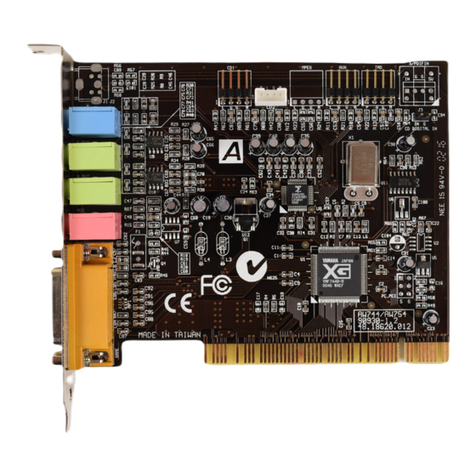
Yamaha
Yamaha YMF744 installation manual
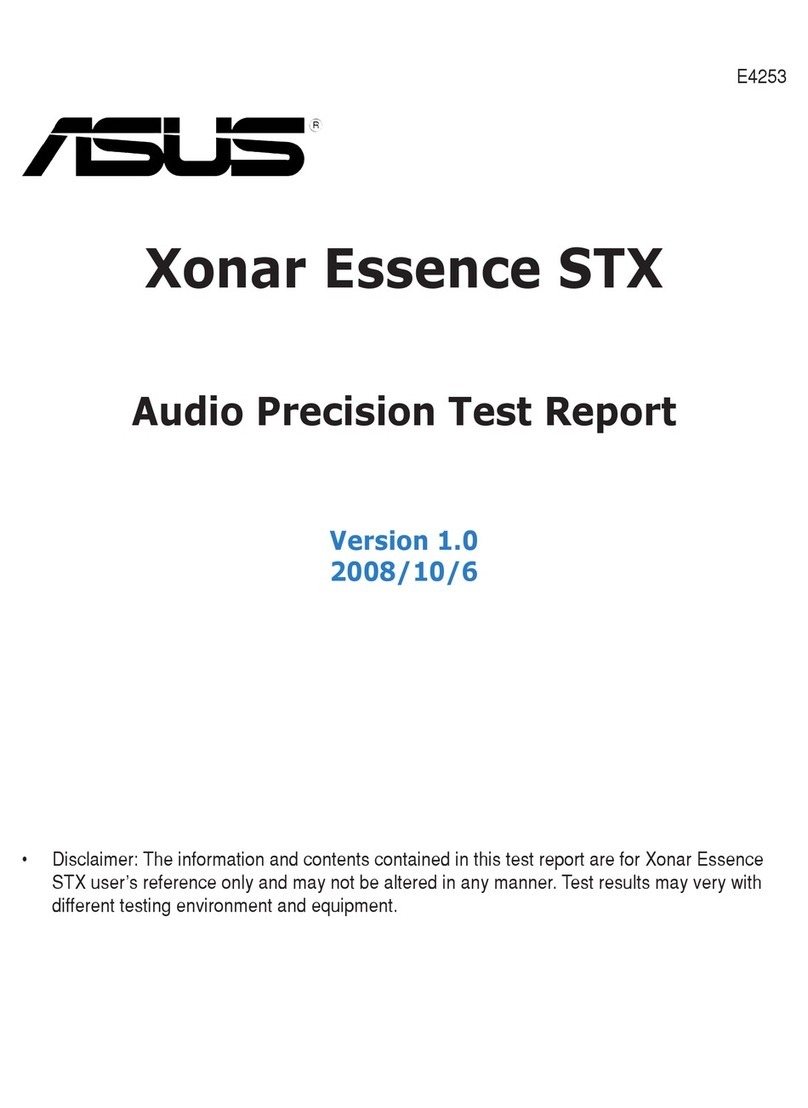
Asus
Asus XONAR ESSENCE STX - Sound Card - 192 kHz Reports manual

Yamaha
Yamaha HY256-TL-SMF owner's manual
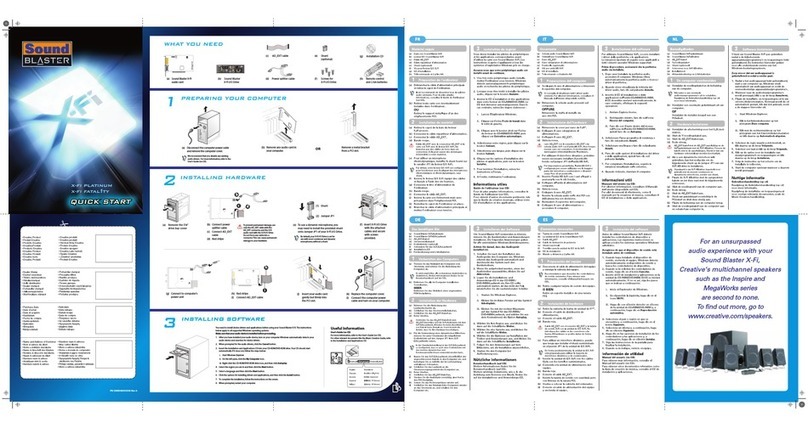
Creative
Creative X-FI FATAL1TY - SB X-FI PLATINIUM FATAL1TY QUICKSTART FRONT EN FR DE IT ES... quick start guide
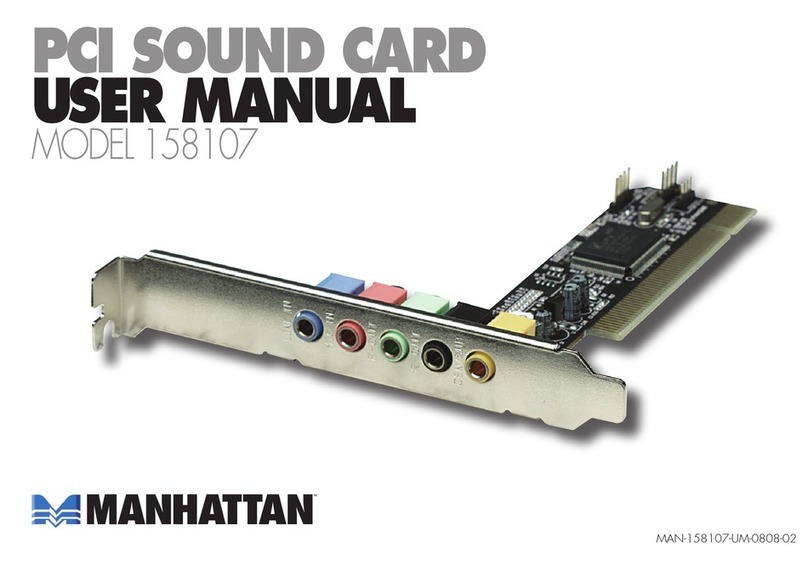
Manhattan
Manhattan 158107 user manual
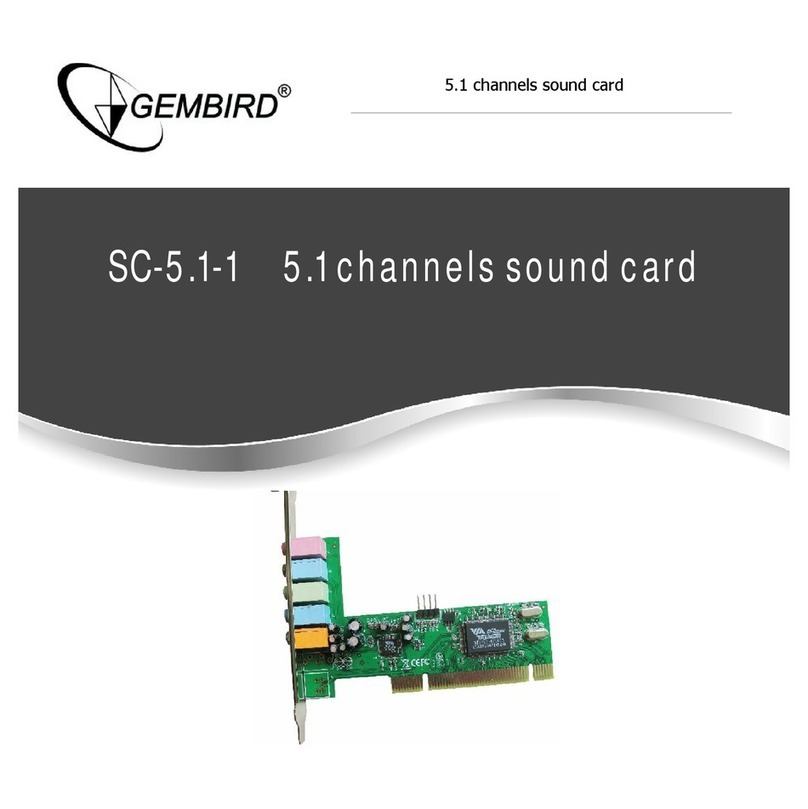
Gembird
Gembird SC-5.1 user guide
